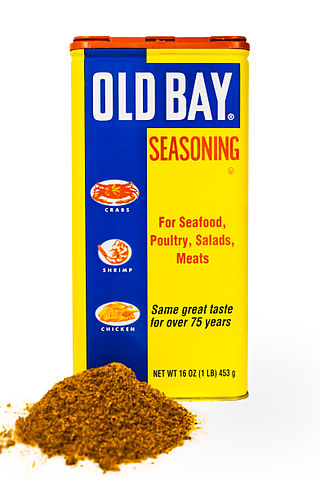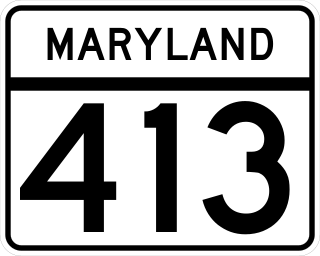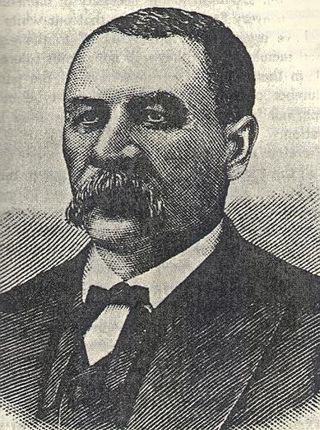
Crisfield is a city in Somerset County, Maryland, United States, located on the Tangier Sound, an arm of the Chesapeake Bay. The population was 2,515 at the 2020 census. It is included in the Salisbury, Maryland-Delaware Metropolitan Statistical Area. Crisfield has the distinction of being the southernmost incorporated city in Maryland.

Tangier is a town in Accomack County, Virginia, United States, on Tangier Island in the Chesapeake Bay. The population was 436 at the 2020 census. Since 1850, the island's landmass has been reduced by 67%. Under the mid-range sea level rise scenario, much of the remaining landmass is expected to be lost in the next 50 years and the town will likely need to be abandoned.

The Eastern Shore of Maryland is a part of the U.S. state of Maryland that lies mostly on the east side of the Chesapeake Bay. Nine counties are normally included in the region. The Eastern Shore is part of the larger Delmarva Peninsula that Maryland shares with Delaware and Virginia.

Old Bay Seasoning is a blend of herbs and spices that is marketed in the United States by McCormick & Company and originally created in Baltimore, Maryland.

A crab cake is a variety of fishcake popular in the United States. It is composed of crab meat and various other ingredients, such as bread crumbs, mayonnaise, mustard, eggs, and seasonings. It is then sautéed, baked, grilled, deep fried, or broiled. Crab cakes are traditionally associated with the Chesapeake Bay, in the state of Maryland. Although the earliest use of the term "crab cake" is commonly believed to date to Crosby Gaige's 1939 publication New York World's Fair Cook Book in which they are described as "Baltimore crab cakes," earlier usages can be found such as in Thomas J. Murrey's book Cookery with a Chafing Dish published in 1891.
The United Cannery, Agricultural, Packing, and Allied Workers of America (UCAPAWA) was a labor union formed in 1937 and incorporated large numbers of Mexican, black, Asian, and Anglo food processing workers under its banner. The founders envisioned a national decentralized labor organization with power flowing from the bottom up. Although it was short-lived, the UCAPAWA influenced the lives of many workers and had a major impact for both women and minority workers in the union.
The United Cannery, Agricultural, Packing, and Allied Workers of America union (UCAPAWA) changed its name to Food, Tobacco, Agricultural, and Allied Workers (FTA) in 1944.

Maryland Route 413 is a 14.61-mile (23.51 km) state highway in Somerset County in the U.S. state of Maryland. The route runs from a dead end at Crisfield's city dock, which is located on the Tangier Sound, northeast to U.S. Route 13 in Westover. It is the main highway leading into Crisfield, and is known as Crisfield Highway for much of its length. The highway travels through mostly rural areas of farms and woods as well as the communities of Hopewell, Marion Station, and Kingston. It is a two-lane undivided road for most of its length; a portion of the road in Crisfield is a four-lane road that follows a one-way pair. MD 413 is part of two scenic routes: Chesapeake Country Scenic Byway and the Beach to Bay Indian Trail; both are Maryland Scenic Byways.
The J. Tawes Historical Museum is located on the Somers Cove Marina, Crisfield, Maryland, United States. The museum focuses on the history of the Lower Shore region, including the local people, towns and industry. The museum also features a photograph exhibit about the 1938 Maryland crab pickers strike.

Hoopers Island is a chain of islands in Dorchester County, Maryland, United States. Upper Hoopers Island and Lower Hoopers Island are surrounded by water with the Chesapeake Bay on the west and the Honga River on the east. The remote set of islands has much wildlife and is well known for sport fishing and crabbing industries. Hoopers Island was issued one of the earliest land grants in Dorchester County, Maryland.

Phillips Foods, Inc. and Seafood Restaurants is a family owned and operated seafood company in the mid-Atlantic region, United States. Phillips Foods, Inc., seafood manufacturers as well as restaurateurs, specializes in crab meat and crab cakes, and produces a line of fish and shrimp products. The company is headquartered in Baltimore, Maryland. Phillips Seafood Restaurants have casual dining, buffet service and carryout.

Slavery in Maryland lasted over 200 years, from its beginnings in 1642 when the first Africans were brought as slaves to St. Mary's City, to its end after the Civil War. While Maryland developed similarly to neighboring Virginia, slavery declined in Maryland as an institution earlier, and it had the largest free black population by 1860 of any state. The early settlements and population centers of the province tended to cluster around the rivers and other waterways that empty into the Chesapeake Bay. Maryland planters cultivated tobacco as the chief commodity crop, as the market for cash crops was strong in Europe. Tobacco was labor-intensive in both cultivation and processing, and planters struggled to manage workers as tobacco prices declined in the late 17th century, even as farms became larger and more efficient. At first, indentured servants from England supplied much of the necessary labor but, as England's economy improved, fewer came to the colonies. Maryland colonists turned to importing indentured and enslaved Africans to satisfy the labor demand.

The California agricultural strikes of 1933 were a series of strikes by mostly Mexican and Filipino agricultural workers throughout the San Joaquin Valley. More than 47,500 workers were involved in the wave of approximately 30 strikes from 1931 to 1941. Twenty-four of the strikes, involving 37,500 union members, were led by the Cannery and Agricultural Workers' Industrial Union (CAWIU). The strikes are grouped together because most of them were organized by the CAWIU. Strike actions began in August among cherry, grape, peach, pear, sugar beet, and tomato workers, and culminated in a number of strikes against cotton growers in the San Joaquin Valley in October. The cotton strikes involved the largest number of workers. Sources vary as to numbers involved in the cotton strikes, with some sources claiming 18,000 workers and others just 12,000 workers, 80% of whom were Mexican.

Isaac Myers was a pioneering trade unionist, a co-operative organizer and a caulker from Baltimore, Maryland. He was African American.

In 1933 there was a cherry strike in Santa Clara, California. The main overview of the events in Santa Clara was an agricultural strike by cherry pickers against the growers or employers. As the events of the labor strike unfolded, the significance of the strike grew beyond that of the workers themselves into a broader scope within America.

John Frederick "Johnny" Mautz IV is an American politician who has served as a member of the Maryland Senate from District 37 since 2023. A member of the Republican Party, he previously represented District 37B in the Maryland House of Delegates from 2015 to 2023.
The 1985–1987 Watsonville Cannery strike was a labor strike that involved over 1,000 workers at two food processing facilities in Watsonville, California, United States. The facilities were owned by Watsonville Canning and Richard A. Shaw Inc., two of the largest frozen food processors in the United States, while the workers were all union members of the International Brotherhood of Teamsters (IBT) Local 912. The strike began on September 9, 1985, and completely ended about 18 months later, on March 11, 1987.
Nikola Bezmalinović, known as Nick Bez, was the founder of fishing, canning, and shipping companies in Juneau, Alaska. He operated the largest fishing ship at the time, the 423 ft. Pacific Explorer. He also owned and operated the Nornek cannery, two gold mines, Alaska Southern Packing Company, Peter Pan Seafoods, Alaska Southern Airways, Pacific Exploration Company and the Intercoastal Packing Company, as well as West Coast Airlines, which became part of Air West. He became known as a "rags to riches" entrepreneur. In 1919, Nikola Bezmalinović changed his name to Nick Bez. Bez died in 1969.
Handy Seafoods is one of the oldest seafood processing companies in the United States, and one of the largest crab suppliers in the U.S.

Jay Fleming is an American photographer specializing in the documentation of Chesapeake Bay’s watermen, wildlife, and environmental issues affecting the region. Based on the Eastern Shore of Maryland, he has published the books Working the Water (2016) and Island Life (2021) and conducts photography workshops focused on Chesapeake Bay culture and ecosystems.















